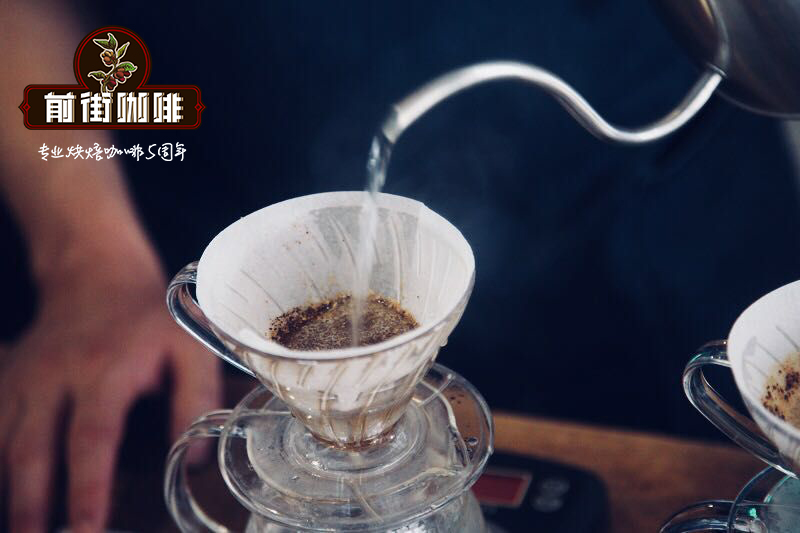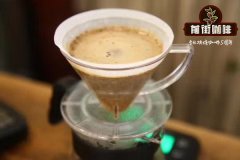What is the best brand of coffee in Ethiopia? the difference between Panamanian Rose Summer and Rose Summer Village Rose Summer

Professional coffee knowledge exchange more coffee bean information please follow the coffee workshop (Wechat official account cafe_style)
Qianjie-Panamanian Rose Summer and Rose Summer Village knowledge sharing
There are mainly nine major producing areas of Ethiopian coffee, namely: Yirgacheffe (Yega Sheffield), Sidamo (Sidamo), Harar (Hara), Limu (Lim), Lekempti (Lekhampdi), Illubabor (Iruba), Jimma (Jinma), Teppi (Tippi) and Bebeka (Bebeca).
Yirga Cheffe is a small town in eastern Egypt, 1800-2000m above sea level. The ancient saying "Yirga" means "settle down" and "Cheffe" means "wetland". Yejaschen, which is attached to the Sidamo region, is very popular in the world boutique coffee circle because of its unique jasmine fragrance and citrus acid. This special taste is also known as "Yejashifen" taste. According to the defect rate of raw beans, Yejia snow caffeine can be divided into five grades of G1~G5 from good to bad. It is generally washed with water, but there are also a small number of excellent beans intended to be insolated to enhance the charming fruit aroma and mellow thickness.
The Sidamo production area is very close to Yega Cherophine, and its flavor is also very similar. After delicate washing or sun treatment, it also has floral and citrus flavors, soft sour taste and the same price as Yega Chet. Like Yejasuffe, this variety has medium-sized beans, but there are also small-grain varieties with dwarf plants. Sidamo coffee is generally light to medium roasted to retain the bright sour taste and intoxicating floral aroma of the variety.
Rose seeds were first collected from the wild Kafa forest in southwestern Ethiopia in the 1930s, when people were looking for new disease-resistant coffee varieties. The name of Rosa comes from the nearby Gesha Mountain. The rose seeds were first taken to Tanzania and then to Costa Rica, where the Center for Tropical Agricultural Research (CATIE) marked it T2722. In the 1950s and 1960s, T2722 was planted in some coffee farms as a disease-resistant variety, but it was not widely cultivated because of its low yield.
In 2003, the Panamanian Peterson family discovered the high-quality potential of this coffee on their farm, Hacienda La Esmeralda. They began to grow and sell the coffee in large quantities, which later won a series of "best coffee in Panama" competitions and set price records year after year at auction.
Since then, farmers in Central America and elsewhere have competed to grow rose summer. However, it seems that only under certain conditions can the high-quality potential of Rosa Rosa be fully realized, which means that not all Rosa has the extraordinary characteristics that make this variety so famous.
The Panamanian rose summer is a long pointed shape, and the rose summer village is an oval shape; the Panamanian rose summer tends to flower and fruit tea flavor, and the rose summer village tends to flower and fruit flavor.
Knowledge expansion: Gesha1931 is confirmed by observing the shape of the plant, the shape and size of the beans, and its cup test, the mother of its recent Panamanian summer.
END
Important Notice :
前街咖啡 FrontStreet Coffee has moved to new addredd:
FrontStreet Coffee Address: 315,Donghua East Road,GuangZhou
Tel:020 38364473
- Prev

Where is Rose Summer Village? what is the flavor of Ethiopian Coffee Rose Summer
Professional Coffee knowledge Exchange more information on coffee beans Please pay attention to the coffee workshop (Wechat official account cafe_style) front street-Rosa Village Rose Summer knowledge sharing birthplace of rose coffee in Ethiopia is highly demanding, requiring an almost perfect location: high altitude, ample rainfall, mild climate and other key natural factors needed to produce quality coffee. Finally, heaven
- Next

A brief introduction to the taste of chaka Rose Summer Coffee recommended by Ethiopian Coffee
Professional coffee knowledge exchange more coffee bean information Please follow the front street of coffee workshop (Wechat official account cafe_style)-chaka Coffee knowledge sharing Rose Summer in Rose Summer Village-is a precious coffee variety, with a unique aroma of jasmine and bright acidity, it is often dominant in all kinds of coffee competitions, and the price is becoming more and more expensive. The seed of Rosa rugosa was originally born in the 30th century.
Related
- Beginners will see the "Coffee pull flower" guide!
- What is the difference between ice blog purified milk and ordinary milk coffee?
- Why is the Philippines the largest producer of crops in Liberia?
- For coffee extraction, should the fine powder be retained?
- How does extracted espresso fill pressed powder? How much strength does it take to press the powder?
- How to make jasmine cold extract coffee? Is the jasmine + latte good?
- Will this little toy really make the coffee taste better? How does Lily Drip affect coffee extraction?
- Will the action of slapping the filter cup also affect coffee extraction?
- What's the difference between powder-to-water ratio and powder-to-liquid ratio?
- What is the Ethiopian local species? What does it have to do with Heirloom native species?

